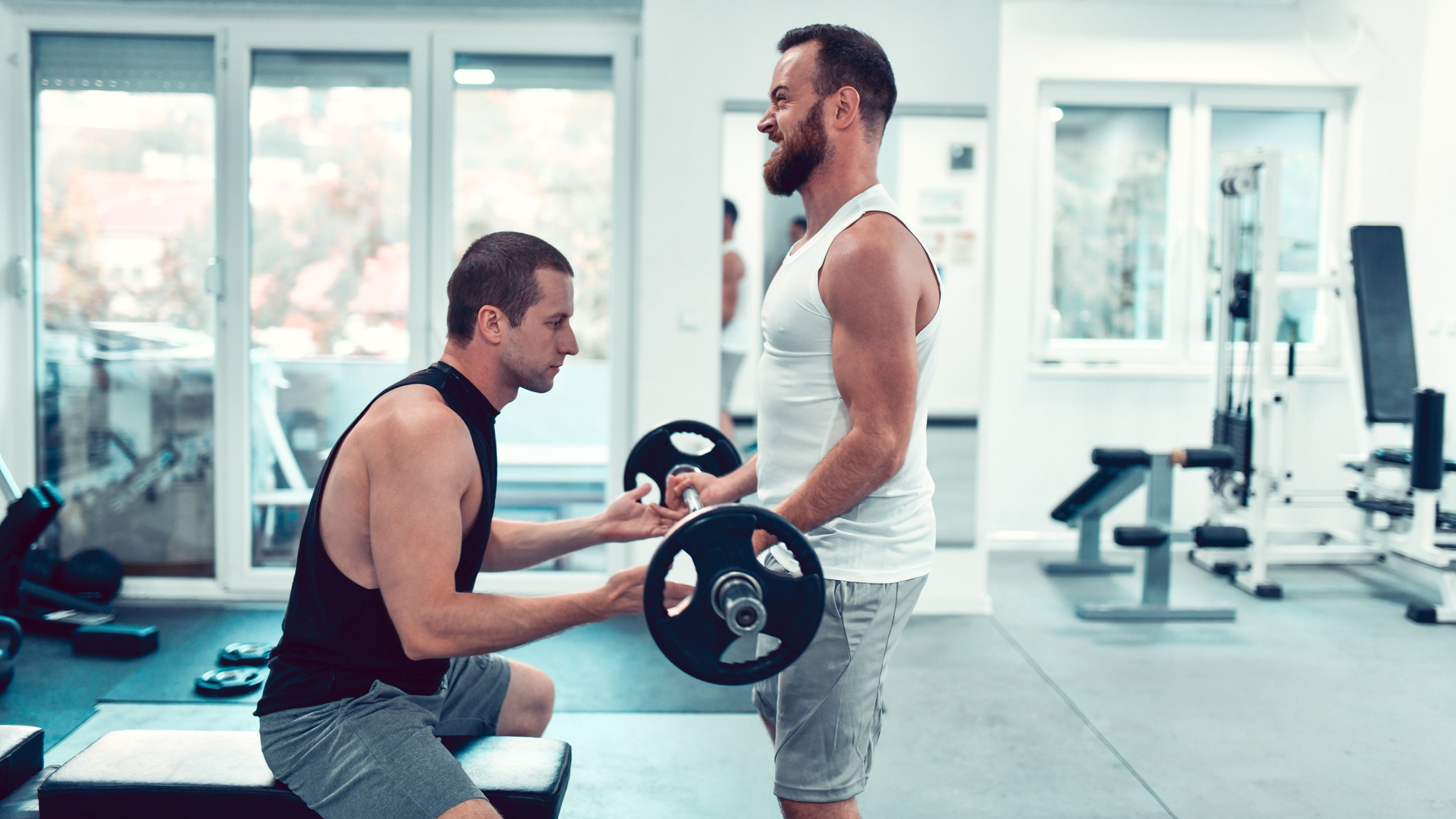How To Use Negative Reps To Get More Out Of The Gym
Use negative reps to intensify your training and power through strength plateaus

Whether you’re an experienced gym-goer or fairly new to the weights room, it’s always worth thinking about ways to vary your training to keep your workouts interesting and help ensure that you’re making the most of your time in the gym.
If you’re training for hypertrophy, negative reps can be a useful tool to add to your muscle-building workouts. To find out more about negative reps and how they can be used in your training, we spoke to Emily Servante, trainer education manager at Ultimate Performance.
What are negative reps?
To understand what a negative rep is, you need to understand the components of a rep. Let’s take a biceps curl. When I’m lifting the weight, that is called the concentric. If I then hold that contraction, that is called isometric—another good example of an isometric exercise where you’re maintaining that tension is the plank. Then the eccentric is the lowering portion of the lift. A negative rep is one that emphasises that eccentric portion of the lift.
How and why would you do negative reps?
Most research shows people are stronger on the eccentric portion of the lift, and there are a couple of ways that you can do them.
One way of using a negative would be to use the same load for both the concentric and eccentric. A coach or someone could help you on the concentric, and then you control the eccentric. This might be good if you’ve completely maxed out how many reps you can do with that load, and then you want to get a couple of extra reps in there. That’s a great way of overloading beginners who maybe can’t use a lot of load.
The second way that you could use negatives would be to use a heavier load than you did in your concentric movement. Again, you’ll need someone to assist you with this. For example, if I do a dumbbell curl with a weight that’s a lot heavier than I can manage on the concentric, I would need someone to help me get the load up. Then I could control it back down. That would be quite a good way to overcome a potential strength plateau.
You could also use them as a finisher. If you were doing a lateral raise, for instance, with dumbbells, you might use a moderate load that you can do 12 reps on really well. Go to failure on that. And then you might use a bit of momentum to lift the weight, and then control the load down.
They are nearly always used as an intensifier, or to get you over a plateau.
Get the Coach Newsletter
Sign up for workout ideas, training advice, reviews of the latest gear and more.
Is the main benefit of negative reps that they allow you to do more reps?
Basically. Previously there was the opinion that these eccentrics increased potential hypertrophy, or muscle growth, because they increase muscle damage, where the fibres of the muscle get pulled apart. But we know now that muscle damage doesn’t really contribute that much to hypertrophy.
The primary driver is your training volume—your sets x reps x load. So anything that you can do that allows you to even slightly increase that, that’s still an improvement.
Are there any downsides to using negative reps?
The way to think about any exercise or training method is it’s just a tool, and like any tool in your toolbox, it’s got a particular purpose. You’re not going to hammer in a screw—well, you could do, but it might not give you the desired outcome. This is a particular tool and you want to use it with the right exercise and in the right scenario.
You use it just to eke out that little bit more from someone. You can do that with an advanced trainee, but if you use that with a beginner, it also teaches them to be safe in going to true failure, which can often be a bit of a barrier.
Are negative reps best done with a trainer?
This is something that a coach would do to get every last drop out of a client. Give them a great training experience and show them what it means to go to true failure. It is more difficult without one, but like I mentioned with the lateral raise, that would be an example where you could do it on your own, because you could use momentum [on the concentric].
You could also do it with press-ups. You could do as many as you can on your feet, then when you reach failure, you could switch to press-ups on your knees and reach failure again. Then you could use other parts of your body to get yourself back up and lower again for negative reps.
Another way to do it could be doing a dumbbell split squat. You could do as many reps as you could with the load. Then you could get rid of the load and do as many as you can bodyweight. Then if you were next to a rack or something, you could use that to support yourself to pull yourself back up, and then lower yourself really slowly. This works as a finisher, for those last drops of effort.

Nick Harris-Fry is a journalist who has been covering health and fitness since 2015. Nick is an avid runner, covering 70-110km a week, which gives him ample opportunity to test a wide range of running shoes and running gear. He is also the chief tester for fitness trackers and running watches, treadmills and exercise bikes, and workout headphones.









